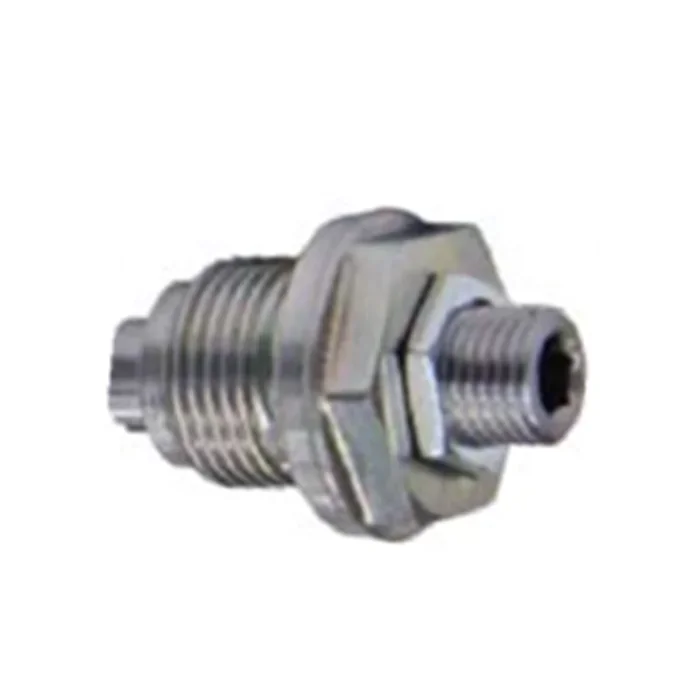Flow control valves play a critical role in various industries where fluid flow needs to be regulated. From controlling the flow rate of water in plumbing systems to managing the flow of fuel in engines, these valves ensure that fluids move at the desired pace. In this blog, we will explore the inner workings of flow control valves, their types, and how they regulate fluid flow.
I. Understanding Flow Control Valves
Flow control valves are mechanical devices that regulate the flow rate of fluids, such as liquids or gases, through a system. These valves can either allow or restrict the flow by adjusting the size of the opening through which the fluid passes. By controlling the flow rate, flow control valves enable operators to maintain desired pressures, temperatures, and flow rates within a system.

II. Types of Flow Control Valves
There are various types of flow control valves, each designed to suit specific applications. Some common types include:
1.Globe Valve:
The globe valve is a versatile flow control valve that regulates fluid flow by adjusting the position of a movable disk or plug inside the valve body. By rotating the stem, the operator can increase or decrease the flow rate. Globe valves are commonly used in plumbing systems, heating systems, and industrial applications.
2.Ball Valve:
Ball valves employ a spherical ball with a hole in the center to control fluid flow. When the hole is aligned with the pipe, the fluid flows freely. Rotating the ball by 90 degrees blocks the flow. Ball valves are widely used in household plumbing, irrigation systems, and industrial settings due to their durability and ease of operation.
3.Butterfly Valve:
Butterfly valves consist of a disc-shaped closure element that rotates within the valve body. By turning the disc, operators can regulate the flow rate. These valves are commonly used in large-scale industrial applications, such as water treatment plants and power generation facilities, due to their ability to handle high flow rates.
III. How Flow Control Valves Regulate Fluid Flow
Flow control valves regulate fluid flow by adjusting the size of the opening through which the fluid passes. Depending on the valve type, this adjustment can be achieved through various mechanisms.
Throttling:
Throttling is the most common method used by flow control valves to regulate fluid flow. By partially closing the valve, the effective opening size is reduced, resulting in lower flow rates. Conversely, opening the valve wider increases the flow rate. Throttling is achieved by adjusting the position of the valve's movable element, such as a disk, ball, or closure element.
Pressure Regulation:
Some flow control valves regulate fluid flow by maintaining a constant pressure differential across the valve. These valves are often used in systems where pressure fluctuations need to be minimized, such as hydraulic systems. By adjusting the valve's position based on the pressure differential, these valves ensure a steady flow rate.
Flow Balancing:
Flow balancing valves are designed to regulate fluid flow in systems with multiple branches or circuits. These valves ensure that each branch receives an equal flow rate. By adjusting the valve's position, operators can balance the flow between different circuits, preventing overflows or insufficient flow rates.

IV. Applications of Flow Control Valves
Flow control valves have a wide range of applications across various industries. Some notable applications include:
Plumbing Systems:
Flow control valves play a crucial role in plumbing systems, where they regulate the flow rate of water to maintain optimal pressure and prevent pipe bursts. These valves are commonly used in residential, commercial, and industrial plumbing installations.
HVAC Systems:
In heating, ventilation, and air conditioning (HVAC) systems, flow control valves regulate the flow rate of hot or cold water to maintain desired temperatures within a building. These valves ensure that different areas receive adequate heating or cooling based on their requirements.
Industrial Processes:
Flow control valves are extensively used in industrial processes, such as chemical manufacturing, oil and gas refining, and power generation. These valves regulate the flow of various fluids, ensuring efficient operation and preventing equipment damage.

Conclusion
Flow control valves are essential devices that regulate fluid flow in various industries. By adjusting the size of the opening through which fluids pass, these valves allow operators to control flow rates, pressures, and temperatures within a system. Whether it's managing water flow in plumbing systems or controlling fuel flow in engines, flow control valves play a critical role in ensuring smooth and efficient operations.




